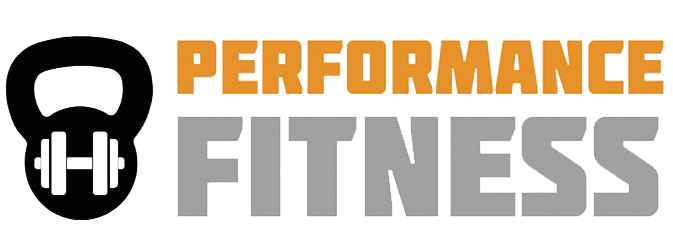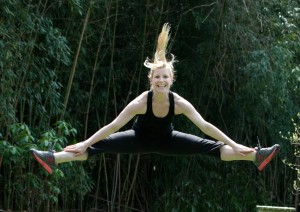Are you stalling out on reaching your goals? Get tracking and make progress!
Assuming you have them, are you reaching your health and fitness goals? Maybe your jeans are roomier or the number on the scale is lower. Those are amazing successes that you definitely should celebrate pronto—maybe with a new pair of jeans. But what happens next? And what happens if those jeans are still tight, or the number on that scale won’t budge in the preferred direction?
Tracking your progress is one of the best ways to guarantee success in any endeavor, and when it comes to health and fitness, there are many variables worth tracking. Here are a few of the most important—
There’s the scale, of course. But as you probably know, the scale does not know the difference between fat and muscle, tendons and bone, intestines and brains, blood and bile. You get the gruesome picture.
If you’re strength training, and I highly recommend that you make strength training the cornerstone of your exercise program (ahem!), then you are building muscle mass. A pound of muscle weighs the same as a pound of fat, people. It just takes up less space because it’s denser. More compact. With this in mind, your pants may start to fit better, but the number on your scale might not lower dramatically.
What to do?
Get out the tape measure. And the camera.
Measure your goal-oriented body parts monthly. Keep the measurements in one place—a journal, spreadsheet—whatever suits you. To guarantee objectivism, take photographs, too. Try to wear the same thing and use the same camera placement and lighting each time. The tape measure might not always wrap around you precisely the same way but the camera, as they say, don’t lie.
Body fat percentage. Caliper-style. Have your trainer or someone who knows his or her way around a body-fat caliper measure yours. This is a great—and cheap—tool to use to measure your progress.
On to the fitness portion—
Once a month measure your progress on your most coveted moves. Time your pushups for a minute once a month to see how many you can bang out. Do the same with jump squats, wall-sits, sit-ups, sprints—whatever it is that makes you feel like a superhero. You’ll be competing with the most worthy adversary—yourself. How will you achieve victory without tracking? How will you know if you’re winning or losing? Exactly.
Nutrition—
This by far is the one element that people hate the most. It seems daunting, counterintuitive, tedious and boring. Maybe it is, but if I had to choose only one variable for you to track it would be this. So own up and do it. You’re already sweating. Already committing. Take this most necessary of steps and watch your progress explode.
Here’s how to do it without driving yourself batty.
- Sign up at myfitnesspal.com.
- Set your goals—calories, protein, fat and carbohydrates are mandatory. Find out how to calculate your caloric needs (try one of these: Calories Per Hour, Accurate Calorie Counter, or Total Energy Expenditure).
- Track every little morsel that goes in your mouth for two weeks. Roll your eyes, curse at your refrigerator, but commit to it. It’s only two weeks!
If you are not tech savvy, or just need a little help getting started, check out these video tutorials – for the computer-based user or for the smart phone user.
Tracking slows you down and brings out your inner judge. You’re more likely to weigh your options, both figuratively and literally—and yes, weighing your portions is a decent way to figure out how many servings of rice you’re about to consume or how much protein there is in that turkey burger. For the record, meat has six to seven grams of protein per ounce. Aim to eat your lean body weight in protein grams. This is not to say that you should allow yourself to morph into a socially decrepit OCD eating disordered loony, but tracking and weighing will educate you about serving sizes. Once you have an idea, you can back off and become more intuitive about it.
People who track their food are more likely to eat less. Knowing you have to log it might make that cookie sitting on your kitchen counter more trouble than it’s worth. Same with eating out, and most people know by now that eating home cooked meals are often more nutritious and lower calorie than the fare you grab out there. Tracking keeps you from BS’ing yourself. “It’s just a cupcake,” becomes, “It’s a meal’s worth of calories”.
One more benefit of tracking is that you will become your own science experiment. By tracking your nutrition and your body composition you will know what works and what doesn’t, and you’ll have documented it so that you can repeat the formula that works for you and toss the formula that failed.
On the fitness side of things, you’ll be able to increase your weight, sets and reps (i.e., volume) at a healthy rate that will prevent injuries and build a steady stream of strength. You’ll be able to compete against yourself—and win, and by tracking your mood and energy level before, during and after your workouts (along with your nutrition), you’ll learn about proper pre-workout hydration and nutrition, and know when it might be best to back off.
Ask yourself—How badly do I want it? A tight butt. Sculpted shoulders. A 40-kilo goblet squat. A half-marathon personal best. Is it worth spending a few minutes per day documenting? You bet your sweet a** it is!


